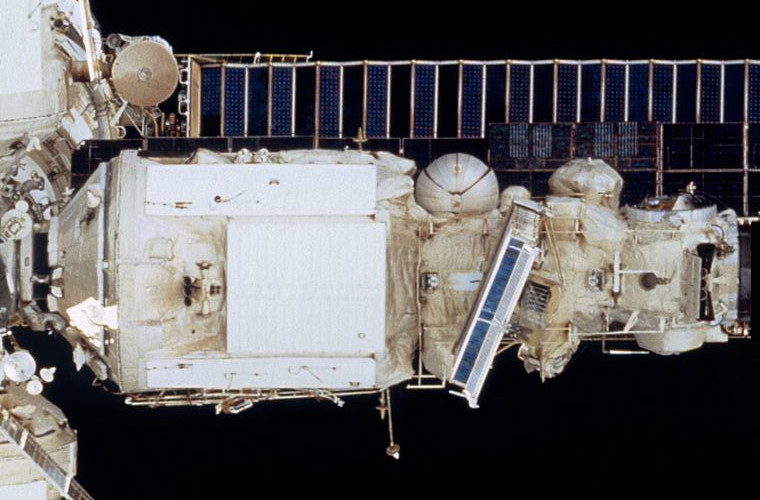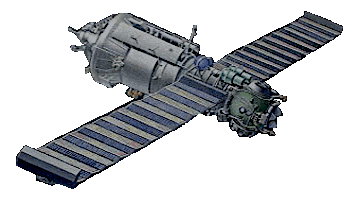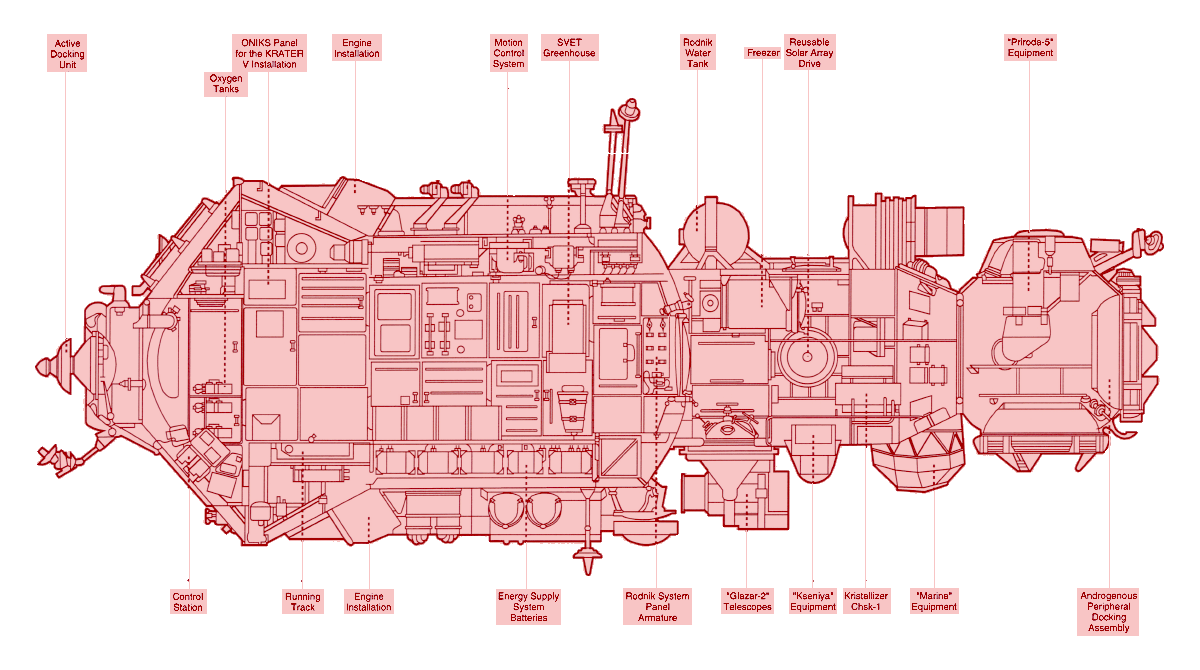
Kristall is connected to the nadir (bottom) port of the Core Module. The Docking Module is connected to the nadir (bottom) port of Kristall.


Kristall is connected to the nadir (bottom) port of the Core Module. The Docking Module is connected to the nadir (bottom) port of Kristall.

The Kristall (English: Crystal) (77KST, TsM-T, 11F77T) module was the fourth module and the third major addition to the Mir space station. As with previous modules, its configuration was based on the 77K (TKS) module.
It was originally named "Kvant 3" and was launched on May 31, 1990 on a Proton-K carrier rocket. It docked to Mir autonomously on June 10, 1990 and was de-orbited on March 23, 2001.
Kristall's solar panels were designed to be "collapsible" and could be deployed and retracted several times. It also carried six attitude control gyrodines to augment the others on Mir.

Time in Orbit: 3948 days, 19 hours
Length: 11.9 m
Diameter: 4.35 m
Mass: 19,640 kg
Wingspan: 36 m
Habitable volume: 60.8 m3
The Kristall module was a multipurpose laboratory for technology and material processing experiments as well as astrophysics and geophysics research.
Kristall's science included the following equipment and experiments:

